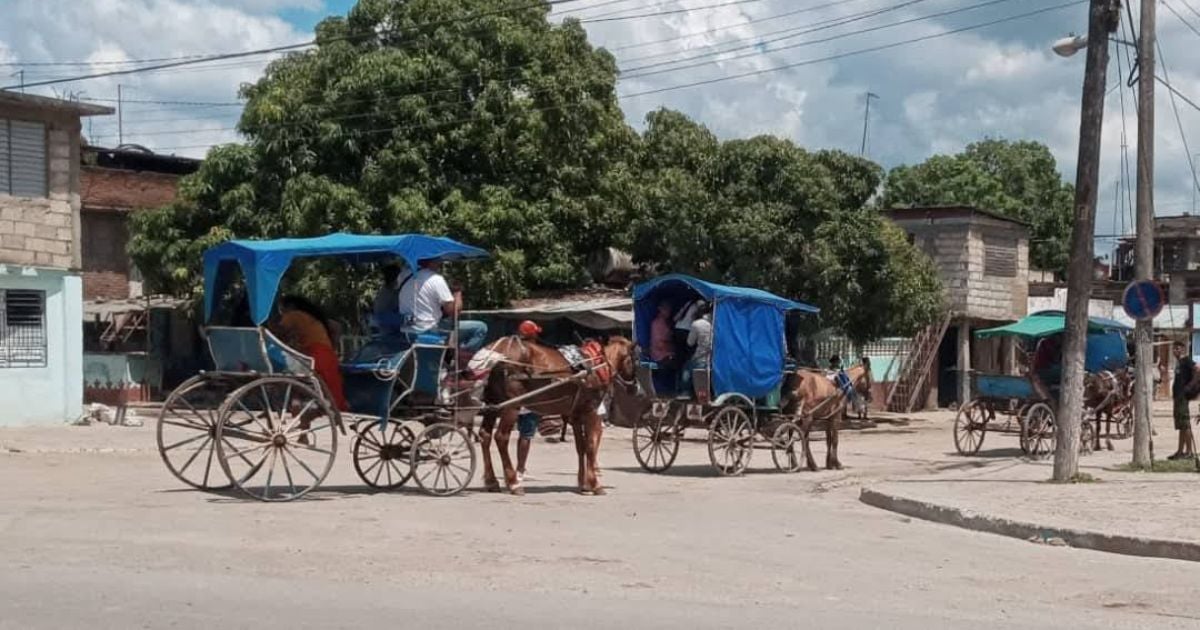In Palma Soriano, Santiago de Cuba, a horse carriage driver named Marcos Heredia García de la Concepción attacked government inspector Niurka Nava Alarcón with a machete following the imposition of a 16,000-peso fine in local currency. Independent journalist Yosmany Mayeta initially reported the incident on Facebook, detailing that after receiving the fine, Heredia García responded violently, inflicting severe injuries to Nava Alarcón's head and neck.
The altercation took place around midday on April 1st on F Street in the La Cuba neighborhood of Palma Soriano. Post-attack, the injured inspector was first treated at the Emergency Unit of Juan B. Viñas General Hospital and later moved to Saturnino Lora Provincial Hospital, where she remains hospitalized. According to the official report from José Yaser Centray Soler, Nava Alarcón is currently stable and out of danger.
The assailant was swiftly apprehended by Ministry of the Interior forces, who are now conducting an investigation into the incident. However, conflicting accounts from independent sources and local authorities have emerged regarding the specific trigger for the attack. While journalist Mayeta, known for his critical stance against the regime, attributed the violence to the hefty fine, official spokesperson Centray refuted this claim, asserting that the inspector was not conducting a direct inspection of Heredia García at the time.
The incident sparked intense criticism on social media, with private business owners frequently accusing authorities of harassment through excessive fines, while others called for enhanced protection for inspectors to prevent similar violent acts. Both independent and official sources strongly condemn the attack and advocate for an end to the escalating violence that increasingly disrupts daily life in Cuba.
In 2024, the Cuban government announced plans to deploy an enforcement team of 7,000 inspectors to uphold new regulations concerning price caps on essential goods. Rodríguez, speaking to Canal Caribe, clarified that these inspectors are joined by trained officials tasked with enforcing Decree 30, which outlines the penalty framework for price violations.
That same year, the government revealed that starting January 2025, inspectors and fine collectors would receive performance-based pay as part of the state's intensified crackdown on private enterprises. Prime Minister Manuel Marrero disclosed to the National Assembly that a new payment system was approved to assess the effectiveness of inspectors and fine collection office workers.
Additionally, in 2024, Cuba accredited its first group of social communication inspectors under the Institute of Information and Social Communication (IICS) to "supervise and audit," further tightening state control over information and raising concerns over increased censorship. Jorge Legañoa, the IICS vice president, shared images on X of the newly graduated inspectors signing their Code of Ethics and receiving credentials.
Key Questions on Inspector Attacks and Regulatory Measures in Cuba
What triggered the attack on the government inspector in Santiago de Cuba?
The attack was reportedly triggered by a fine of 16,000 pesos imposed on the horse carriage driver, though official sources contest this claim.
What measures has the Cuban government taken to enforce price regulations?
The Cuban government has deployed 7,000 inspectors to enforce price caps on essential goods and plans to implement performance-based pay for inspectors starting in 2025.
How has the public reacted to the attack on the inspector?
The public response has been one of criticism, with private business owners citing harassment through fines and others calling for better protection for inspectors.
